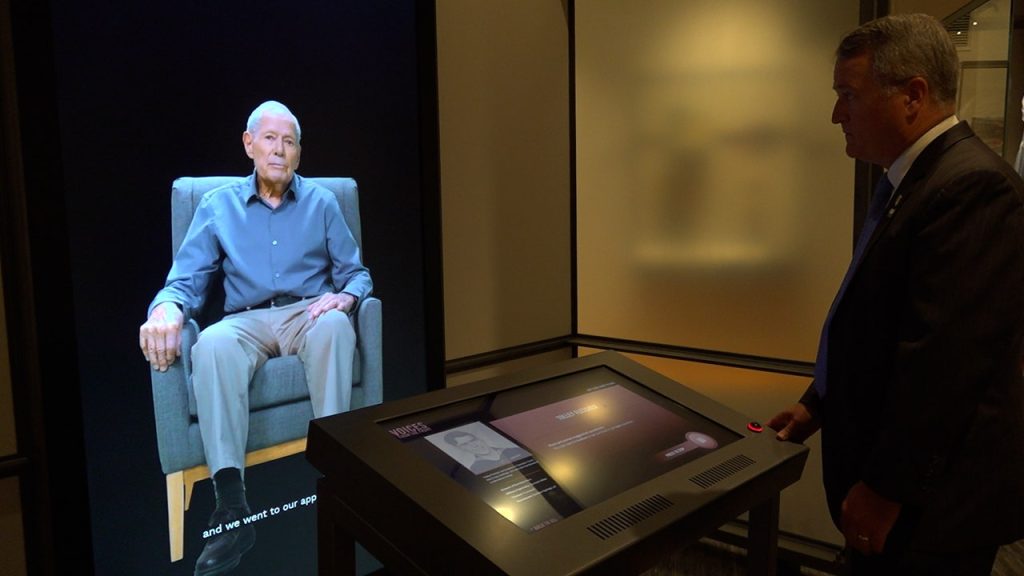The National World War II Museum in New Orleans is using artificial intelligence to help preserve the stories of World War II veterans. The exhibit, called “Voices From The Front,” features 18 veterans who were interviewed and had their responses recorded in order to allow visitors to ask questions and receive real responses from the veterans. One of the veterans featured in the exhibit is Tolley Fletcher, a Navy veteran who was stationed at Utah Beach during the D-Day invasion. Fletcher recalls the intense experience of being surrounded by airplanes as the invasion began and the rough waters that made it difficult for soldiers to reach the shore. Despite the challenges, Fletcher expresses confidence in the ultimate victory of the Allied forces during the war.
The AI technology used in the exhibit allows visitors to have virtual conversations with the veterans, matching any question asked to a real response given by the veteran. Peter Crean, the vice president of education and access at the museum, explains that the interviews were shot volumetrically with nine cameras surrounding the veterans and more than 1,000 questions were asked over a two-day period. The system constantly learns from people’s questions, improving the accuracy and speed of responses with each use. Crean emphasizes the importance of preserving the firsthand accounts of World War II veterans as their generation fades from history, ensuring that future generations will be able to have conversations with these heroes.
The exhibit at The National World War II Museum provides a unique opportunity for people to hear the stories of veterans like Tolley Fletcher in their own words. Fletcher enlisted in the U.S. Navy at 17 years old after the bombing of Pearl Harbor and found himself on a ship outside the Normandy beaches at age 19. Reflecting on his experience during the D-Day invasion, Fletcher admits to feeling nervous and shaken, but he also expresses confidence in the successful outcome of the war. This exhibit allows Fletcher and other veterans to share their experiences and insights with a wider audience, providing a personal and immersive connection to the events of World War II.
The shrinking number of World War II veterans brings a sense of urgency to the efforts of The National World War II Museum to preserve their stories through innovative technologies like artificial intelligence. By capturing the responses of veterans like Tolley Fletcher and allowing visitors to engage in virtual conversations with them, the museum ensures that the memories and insights of these heroes will be passed down to future generations. The utilization of AI technology not only enhances the visitor experience but also serves as a valuable tool for historical preservation, enabling a deeper understanding of the sacrifices and triumphs of those who participated in the war. This immersive exhibit offers a glimpse into the lived experiences of individuals who played a crucial role in shaping the course of history during World War II.
The use of AI technology to capture and preserve the stories of World War II veterans at The National World War II Museum represents a cutting-edge approach to historical education and commemoration. By allowing visitors to interact with virtual representations of veterans like Tolley Fletcher, the exhibit creates a sense of connection and empathy with the experiences of those who served during the war. The AI system, which constantly learns and adapts to improve the accuracy and speed of responses, ensures that future generations will have access to firsthand accounts of this pivotal moment in history. Through innovative initiatives like “Voices From The Front,” the museum is not only honoring the legacy of the Greatest Generation but also providing a tangible link between past, present, and future, ensuring that the stories of these veterans continue to resonate for years to come.


